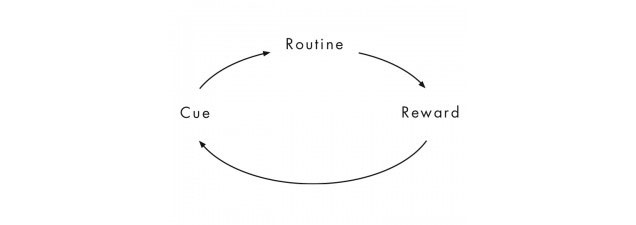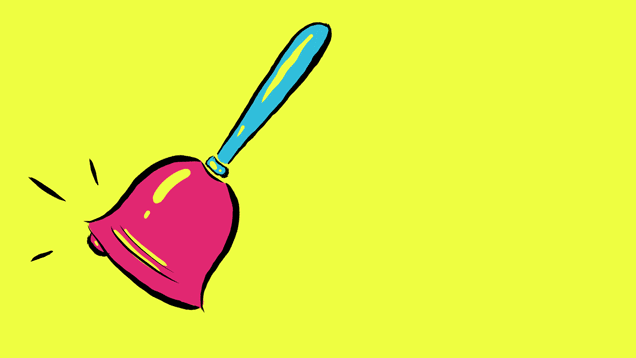Forming habits is hard, so it should come as a surprise there’s all kinds of junk science about the best way to do so, how long it takes and how much repetition matters. Let’s debunk those myths so we can concentrate on what really works.
Illustration: Tara Jacoby
Myth: It Takes 21 Days to Form a Habit
You’ve probably heard it takes 21 days to form a habit (or possibly 28 or 30), but according to most studies, that simply isn’t the case. But it helps to know where that myth comes from. It seems like the initial “21 days” idea originated in Maxwell Maltz’s book, Psycho Cybernetics:
It usually requires a minimum of about 21 days to effect any perceptible change in a mental image. Following plastic surgery it takes about 21 days for the average patient to get used to his new face. When an arm or leg is amputated the “phantom limb” persists for about 21 days. People must live in a new house for about three weeks before it begins to “seem like home”. These, and many other commonly observed phenomena tend to show that it requires a minimum of about 21 days for an old mental image to dissolve and a new one to jell.
Perhaps unsurprisingly, the time it takes to adjust to the loss of a limb doesn’t correlate to forming a habit at all. Still, self-help gurus latched onto the 21 days idea and spread the myth everywhere they could.
So, researchers from the University College of London decided to take a closer look. In their study, they found that habits take a lot longer to form. They’re also dependent on the person and the habit. On average, it took people 66 days to form a habit, but it varies for everyone (the variability was big, too, ranging from just 18 days to 254 days). Their study was small at just 96 participants, but it still shows that the amount of days it takes to form a habit is variable.
Which is all to say, there’s no magic number and no magic bullet. It will take time and effort to form a habit, so don’t expect to automatically start doing something in just 21 days. Habit forming is a process, not an event on your calendar, so don’t treat it like one.
Myth: You Can’t Miss a Day When Forming (or Breaking) a Habit
The /”Don’t Break the Chain” productivity method (widely attributed to Jerry Seinfeld) is wildly popular and the concept is pretty simple: spend some amount of time every day doing an activity, then cross off the day on the calendar when you do it. If you don’t do that task, you miss crossing out your calendar and the chain is broken. Of course, Seinfeld isn’t the only person to come up with this concept. It’s a persistent myth that in order to form a habit, you need to do it every day (or at least on a schedule) without ever missing a day.
The good news comes from the same study, published in European Journal of Social Psychology, that debunked the 21 days myth. It turns out that missing a day occasionally didn’t affect the habit formation process. Repetition of behaviour is important, but you don’t need to beat yourself up just for missing a day occasionally. That doesn’t mean this method isn’t useful, though. Tracking progress is good, just don’t let missing a day destroy your self-esteem.
Myth: All Strategies Work for Everyone
Everyone has their own “perfect” method that helped them form their habit. Maybe they created a routine in a spreadsheet. Perhaps they followed the advice of countless famous people. But like most things in life, there’s no magic tip that works for everyone.
If you look through the archives here at Lifehacker, you’ll find countless tips for helping form a habit, complete with examples and anecdotal evidence about how well these techniques work. But strategies aren’t universal. What works for you might not work for me. For one, our lifestyles are all a little different, so why I have (or want) a habit is completely different from yours. Motivation is different too. In her book Better Than Before: Mastering the Habits of Our Everyday Lives, author Gretchen Rubin suggests most of us fall into one of four different general categories with regards to motivation:
- Upholders respond readily to both outer expectations and inner expectations.
- Questioners question all expectations, and will meet an expectation only if they believe it’s justified.
- Obligers respond readily to outer expectations but struggle to meet inner expectations.
- Rebels resist all expectations, outer and inner alike.
Knowing which group you fall into can help you work through your own tendencies to find the best way to tackle a habit. If you’re not sure which you fall into, Rubin has a quiz that can help point you in the right direction. Once you complete the quiz, she deals out a little advice for your motivation type. For example, after taking the quiz, I was labelled a “questioner”, which doles out this advice:
Once Questioners believe that a particular habit is worthwhile, they will stick to it — but only if they’re satisfied about the habit’s soundness and usefulness. They resist anything arbitrary or ineffective; they accept direction only from people they respect.
That doesn’t sound super helpful on the surface, but it’s helpful when thinking about habit formation. If I’m going to take something on, I need to think it’s valid and useful, so you probably won’t see me going on regular juice fasts anytime soon. I also don’t tend to need much in the way of external accountability. If I want to go on bike rides four days a week, I just go. I don’t need a riding buddy to go with. However, if I was an “obliger”, external accountability, like a workout buddy, would probably be really useful in forming that habit.
Regardless of how you feel about Rubin’s particular metric, the takeaway is really the same. We’re all a little different and what motivates us to start new habits and ditch old ones matters when you’re trying to figure out an approach that works for you.
Myth: Rewards Alone will Help You Stick to a Habit
If you look at just about any advice for forming a habit (or breaking one), you’ll see suggestions that you should reward yourself as you go so you stick to it. This is a great idea, but it’s not the whole story.
In his book, The Power of Habit, Charles Duhigg sums up the problem with relying just on rewards:
Countless studies have shown that a cue and a reward, on their own, aren’t enough for a new habit to last. Only when your brain starts expecting the reward — craving the endorphins or sense of accomplishment- — will it become automatic to lace up your jogging shoes each morning. The cue, in addition to triggering a routine, must also trigger a craving for the reward to come.
Duhigg’s saying that you can’t rely on rewards to get that habit to stick. It’s a whole system, which he calls the habit loop. It looks like this:

So, if you want to get rid of a bad habit, you need to identify the cue and come up with an alternative reward. For example, let’s say you want to stop eating a cookie everyday at lunch. First, you need to identify the cue. Is it hunger? Boredom? Low blood sugar? Take some time to think about what launches that initial craving.
To figure out what the craving is, Duhigg suggests you start experimenting with rewards. This can help you figure out how that craving works and replace it with something else. So, when you’re craving that cookie, adjust your reward. Instead of getting a cookie, go outside and take a break. Or buy an apple. Maybe try getting a coffee instead. When you choose to do something that isn’t eating a cookie, you’ll eventually figure out what you’re craving so you can replace the cookie with something useful. For example, maybe that cookie was just a convenient excuse to get up from your desk and wander around for a bit.
Once you isolate that craving and reward, you can even start working out the habitual cues so you can really solidify the habit. Experiments suggest these cues fall into five categories: location, time, emotional state, other people and immediately preceding action. When you’re trying to figure out what the cue is, make a note of these five things when you’re craving that cookie. Take a few days to collect all this data. Once you do, you’ll probably know exactly what’s triggering that cookie craving. Now, with all that data, you can start replacing that bad habit with something good.
The point is that cues are just as important as reward, so don’t concentrate solely on the reward. Find that cue and find a way to work with it as well. The same goes for forming good habits too. Want to exercise more? Duhigg suggests choosing a cue like going to exercise in the morning, then rewarding yourself with a smoothie afterward. The cue can even be as simple as leaving your running shoes by the door if you’re trying to get into running.

Comments